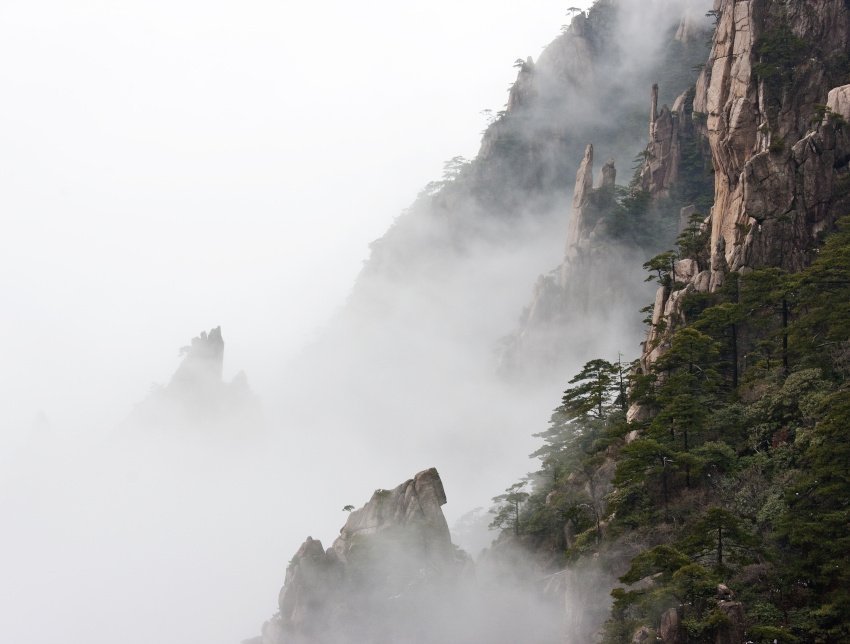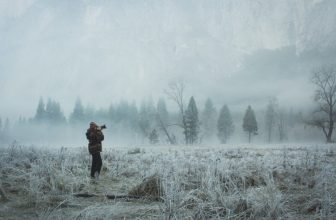Moving into Silence – Musings on a Simple Thing that is Hard to Do

Two Inseparable Sides of Moving into Silence
Moving into silence is a highly subjective, individual experience. Whatever the circumstances for one’s desire for quietness may be, it aims at feeling balance and peacefulness.
There is an outer dimension to the need for stillness, like getting away from an overly noisy environment and avoiding human  relationships loaded with unnecessary drama.
relationships loaded with unnecessary drama.
And it has an inner aspect of calming the mind and focussing on what matters. Moving into silence can be a lifelong quest or a temporary necessity to recharge one’s batteries.
Either way, moving into silence evokes an inherent dichotomy:
Silence, for some, can be a sign of danger. Traditional cultures use firecrackers to scare off evil spirits. Longtail boats in South East Asia are unbearably noisy for the very same purpose. Ghosts, so they say, are much more sensitive to noise than humans. Staying in a noisy place is safe.
Noise accustomed city dwellers can find it awkward and disturbing to go to the quiet countryside. One would have to bear feeling her pulse and blood moving in the head.
And silence, diametrically opposite, is bliss. Silence is gold, wisdom, and the music of the gods. Silence is an excellent source of strength, says Lao Tzu. Becoming still is the path in meditation to unveil self-knowledge, and quietude is the serenity of our final destination.
How Can We Talk about Silence and How Does it Relate to Noise?
The German philosopher Wittgenstein discerned how words constitute limits for our experiences and how this refers to being silent. ‘Of which one cannot speak, thereof one must be silent.’ is Wittgenstein’s 7th proposition from the Tractatus. So what lies beyond is silence.
In a different field but a somewhat similar fashion, the American composer and music theorist John Cage stated that ‘everything we do is music.’ Further, he said that ‘the material of music is sound and silence. Integrating these is composing.’ In John Cage’s famed 4′33″ (pronounced ‘Four minutes, thirty-three seconds’ or just ‘Four thirty-three’) listeners only hear the sounds of the environment during the performance.
After the premiere of 4’33,” John Cage said, ‘There’s no such thing as silence. What they thought was silence, because they didn’t know how to listen, was full of accidental sounds.’
The scholar James M. Fielding writes that ‘Cage’s work gives a concrete, performative reality to Wittgenstein’s early conception of language as well as the mystical revelation that lies behind it.’
How then to Go about Moving into Silence?
Moving into silence, quite ironically so, can cause internal noise at first. Because embracing stillness takes mental energy when living in a mostly noisy world that favors narcissistic extroversion. And diverting from the popular script entails some friction.
Yet, the cacophony of daily chatter among individuals often only serves the stabilization of egos and personal insecurities. As a result, practical mediation courses require absolute silence from their participants. Alone and in silence, we must confront thoughts and feelings. And don’t let them leak into the world as idle banter. Thus, being alone and being silent in this context is not easy.
The French philosopher Blaise Pascal aptly pinpointed the inability of being quiet in his famous adage ‘All of humanity’s problems stem from man’s inability to sit quietly in a room alone.’
Given the social animals we are and our deep-rooted need for recognition and external validation, it is only fair enough to glean through the experiences of others who walked on the path of silence.

Voices from the Endless Sea of Silence
Here are the works of writers and thinkers who have explored moving into silence. They all come from different countries, cultures, and walks of life.
But the quest for silence is, of course, universal.
Moving into Silence to Find Your Inner Sanctuary
The Norwegian explorer, lawyer, art collector, entrepreneur, and author Erling Kagge has written a beautiful book on finding our own quiet space. ‘Silence In the Age of Noise‘ is a charming invitation to rediscover an inner sanctuary. Kagge playfully draws on personal experience as an explorer as well as anecdotic references from music, science, literature, psychology, and philosophy. He takes the reader in thirty-two short chapters from the sewage system below New York to Wittgenstein’s theory of language.
‘I had a primal need for silence,’ says Kagge and describes his most significant challenge in walking to the South Pole as ‘to get up in the morning when the temperature is fifty degrees below freezing’ and the second hardest challenge as ‘to be at peace with yourself. Silence in itself is rich. It is exclusive and luxurious. A key to unlock new ways of thinking. I don’t regard it as a renunciation or something spiritual, but rather as a practical resource for living a richer life.’
I could not agree more: Moving into silence gives us the space from where we draw energy to be our authentic selves in a hectic world full of distractions. ‘Silence is about rediscovering, through pausing, the things that bring us joy.’ Kagge states and maintains that ‘You have to find your own South Pole.’
Finding Silence on the Alternative Path of Being Alone
I first read about Sara Maitland in her 2008 article ‘Beyond peace and quiet’ in The Guardian, which is an edited extract from A Book Of Silence. I immediately sympathized.
When Maitland’s marriage ended, she experienced the lack of noise as enjoyable and then got so hooked on moving into the silence that she began to crave a hermit’s life. In her exquisitely written, profound, and open memoir Sara describes how she explored silence and solitude in the Sinai desert, the Scottish hills, and a secluded cottage on the Isle of Skye. Along with her journey, she scans the diverse cultural history of silence through myth, Western and Eastern religious wisdom, psychology, and the arts.
In her follow-up book How to Be Alone (The School of Life), some four years later, Maitland presents a manual for solitude seekers. Being alone here is a means of moving into silence. While our current hyper-connected society does not approve of loners, being alone provides manifold joys and benefits. So, nothing to be scared of, go solo, she advises.
Writing the book from back to front as Maitland notes, shes first analyzes why an individualistic society frowns upon people being alone. She then suggests practical steps of how to change that attitude and how people can start to explore solitude.
What follows in the third part is an empathetic description of the ‘Joys of Solitude.’ And yes, Sara Maitland certainly enjoys her time alone: ‘A deeper consciousness of oneself, a deeper attunement to nature, a deeper relationship with the transcendent, increased creativity, and an increased sense of freedom. Handy is her ‘homework’ section at the end of the book that suggests further reading on the topic of silence and being alone.
Are You Alone Because You Have To or Because You Want to be Silent?
Solitude is the real twin and a condition for moving into silence. I find it remarkable that Sara Maitland first writes about ‘silence’ and then a few years later about ‘being alone.’ Struggling with being alone can be part of the internal friction that prevents us from experiencing silence. Hence Maitland’s progression of books makes perfect sense.
But the search for how to be alone is also the desperation of a society that frowns upon solitude. It is the expression of pain that, despite the apparent hyperconnectedness, we lack empathetic human connection.
It is the harmful solitude and alienation we are facing trying to mold our human nature to fit into the technologically driven global society. This feeling of social isolation is of crucial concern in our day and age.
As such, the urge to master aloneness is a current cultural product driven by the lack of connection with others. It is about getting away from an unpleasant state of mind. What I am concerned with here is about moving to a new mental frame. Silence is what we seek to reflect and connect to something that is beyond ourselves. Being in solitude and quietness is not an antisocial act, because when we come out again, we can relate to others more deeply.
I will address ‘how to be alone’ another time and hone in further on the joy and benefits of silence. Once we have felt the state of calm, being alone comes easy.

Moving into Silence, Moving into What Lies Beyond
The English word ‘silence’ stems from the Latin’ silentium,’ which, according to Wiktionary, means a) the lack of any sound, b) the act of refraining from speaking, and c) form of meditative worship. If we look into definitions for silence in Middle English, we can see a more pronounced focus on silence as a state of mind. While this would require more scrutiny, the slight differences of defining ‘silence’ in current and Middle English may insinuate a shift towards a more functional rather than spiritual understanding. For our perception of moving into silence, I assume equal importance to the connotations of silence.
The great scholar of mythology, Joseph Campbell, called the search for meaning and ways of experiencing the inner world ‘the vast ground of silence that we all share.’ Silence opens into transcendence. The functional understanding of silence leads over into the spiritual.
Silence as Test, Torment, and Revelation
A transforming silence is also central to the work of our next author: The famous Japanese author Shūsaku Endō dramatized this idea in his 1966 highly applauded and award-winning novel of historical fiction Silence (沈黙 Chinmoku). A Jesuit missionary sent to 17th century Japan endures the brutal persecution in the time of Kakure Kirishitan (‘Hidden Christians’). Endō explores in his novel the theme of a silent God who accompanies a believer in severe suffering. It has recently been made into a motion picture directed by Martin Scorcese.
Protagonist Rodrigues says ‘I knew well, of course, that the greatest sin against God was despair; but the silence of God was something I could not fathom’; ‘Behind the depressing silence of this sea, the silence of God ….. the feeling that while men raise their voices in anguish, God remains with folded arms, silent’ and speaks of ‘terror at the silence of God’. The silence of God is a test of faith in the Christian tradition. And if your faith is strong enough, God will reveal himself. As he finally does reveal himself to Rodrigues in Shūsaku Endō’s novel. Silence is a test, and silence is torment. But silence is also the revelation that eventually manifests for Rodrigues – ‘I was not silent. I suffered beside you.’
The Transformative Power of Thundering Silence
An also seemingly conflicting perception of silence that is life-changing is the oxymoron’ thunderous silence’, a silence so subtle that it is deafening at the same time. This kind of silence is complete emptiness in the Buddhist sense of ultimate liberation as described by Dosun Yoo in Thunderous Silence: A Formula for Ending Suffering: A Practical Guide to the Heart Sutra. Yoo’s book examines the basic tenets of Buddhism, such as emptiness, enlightenment, and The Four Noble Truths regarding the Heart Sutra, a favorite sutra in Mahāyāna Buddhism. Albeit the book may primarily aim at practitioners of the Buddhist tradition, it is an inspiring illustration of a profoundly spiritual connotation of silence.
The book Silence: The Power of Quiet in a World Full of Noise by Thich Nhat Hanh, the Zen master, and revered teacher, also contains a chapter called ‘Thundering Silence.’ This book is more of a practical guide than Dosun Yoo’s book, which instead centers around the analysis of one of Buddhism’s central texts.
Thich Nhat Hanh describes various exercises aiming at developing mindfulness to tap into inner silence. Unlike Yoo’s liberation from all suffering, Thich Nhat Hanh refers us back to society. And this is an essential, often overlooked purpose of moving into silence in the first place. Once we have transformed, we can go out again. This is ‘The Power of Silence.’ Go out into society and contribute in a more reflected, centered, and positive way.
Silence as Eternal Guide
There are two more notable works I would like to mention briefly:
Learning to Silence the Mind: Wellness Through Meditation by Osho aims at discovering the creative potential of the mind to deal with the challenges of everyday life and the world in which we live. Through meditation, we can raise our consciousness. As a result, our consciousness can be the guide rather than just a helpful assistant in our lives. This book also includes links to the Osho Nadabrahma Meditation
Celebrating Silence is a compilation of talks by Sri Sri Ravishankar published by the Art of Living Foundation. On silence, he says, ‘Some questions can only be answered in silence. Silence is the goal of all answers. If an answer does not silence the mind, it is no answer. Thoughts are not the goal in themselves. Their goal is silence. (…) Your soul is solidified silence, and this solidified silence is wisdom, knowledge. (…) Only silence is complete.’ I consider these words a very suitable conclusion for this little foray of silence literature.
Move into Silence to Bear the Noise
So, how now to go about moving into silence?

Experiencing Silence
There is no one path into silence. We need to open for silence, remove barriers, and create space to let it in.
When pain is the trigger to move into silence, it is a good idea to embrace that suffering fully. Moving into stillness is not avoiding or retreating, but a necessary move inwards to expand again later.
Feelings of pain and depression are invitations to look inside and find strength in inner silence. And then to venture back out with renewed energy.
Ideally, you use silence to tune in with yourself. And perhaps you even have what Abraham Maslow called a ‘peak experience.’ The sensation that there is something more extensive and profound than the profanities of daily life. Something that lies beyond and cannot be named, but indeed does feel like a celebration of silence.







